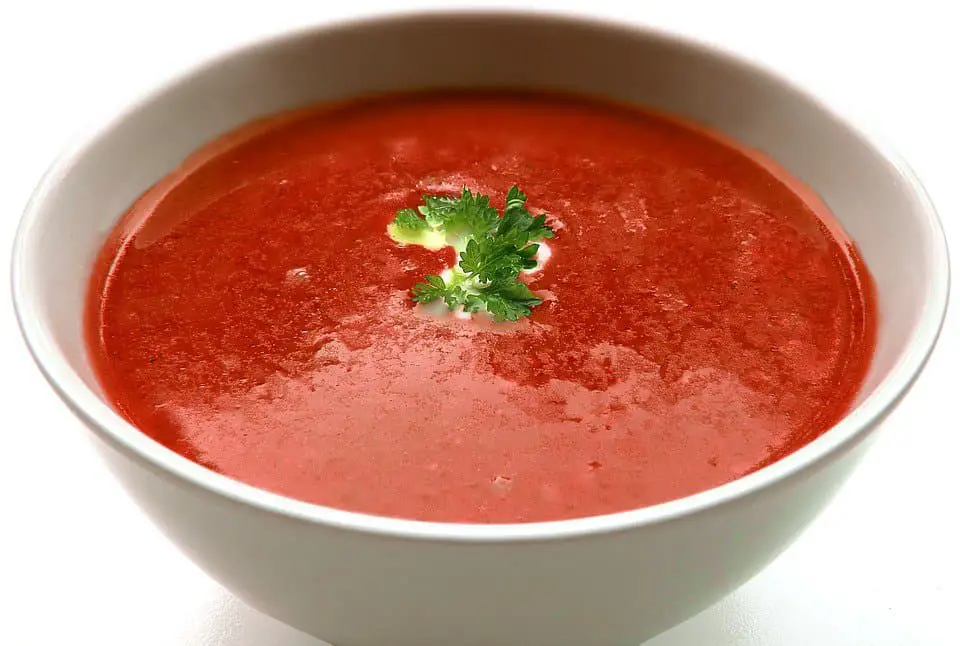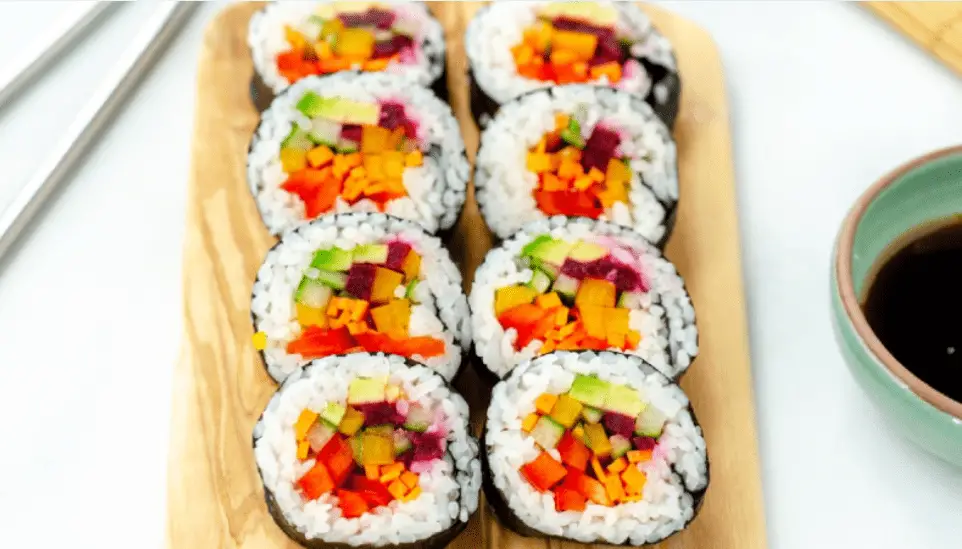
Can you put hot soup in the fridge? This is a question we’ve come across a couple of times, so we’ll step up to answer it today.
Before storing predominantly liquid food products, such as soups and sauces, it is usually best to allow them to cool for a short period before portioning them into containers and storing them in the refrigerator.
This is required to avoid soup poisoning caused by pathogenic bacteria and keep the soup from heating the whole space of the fridge, which raises the danger of deterioration for perishable goods already in the refrigerator.
Can You Put Hot Soup In The Fridge?
No, you should not put hot soup in the fridge. Soups should be allowed to cool for about three hours after being taken off the heat. This is to avoid pathogenic bacteria infection, which can cause soup poisoning and the warmth of the refrigerator cabinet and cause perishable goods to spoil more quickly.
There are usually two types of temperature ranges needed to keep food safe.
- Upwards of 140F
- Downwards of 40F.
Meals can’t be maintained at temperatures beyond 140 degrees Fahrenheit for days or months at a time without overcooking and finally burning. On the other hand, you can store foods at 40 degrees Fahrenheit or below in a refrigerator or freezer.
The danger zone is in the rage: temperatures ranging from 40F to 140F, at which dangerous bacteria readily grow and control whatever medium they’re already in.
Because soup is a liquid, it would take nearly two hours to get it from its searing hot condition of 140 degrees Fahrenheit to the safe zone of 40 degrees Fahrenheit or below on the counter, especially if it’s in quantity.
If soup remains in the danger zone for an extended period, the possibility of excess bacteria reproducing is pretty high; thus, soups should not be chilled for more than two hours on the counter.
Therefore, you need to cool them from 140 to 72 degrees Fahrenheit in three hours (on the counter) and then from 70 to 40 degrees Fahrenheit in four hours.
Does Soup Need To Be Refrigerated?
Many health authorities, like the United States Department of Agriculture, recommend that you refrigerate your freshly cooked broccoli cheese soup or chicken and rice soup, just like any other perishable food.
Food products left to cool on the counter or overnight might grow harmful germs that can cause food poisoning if ingested.
Pathogenic bacteria are primarily active at temperatures ranging from 40 to 140 degrees Fahrenheit. The persistent ones only need three hours or less to awaken from whatever slumber you’ve placed them in during cooking.
An 8-inch pot full of freshly prepared soup will take a minimum of one and a half hours to chill without extra attempts to cool it faster. The soup pot will remain in the danger zone for an extended period, eventually becoming a breeding environment for dangerous bacteria.
Why Can’t I Just Put The Soup In The Fridge?
There are several reasons why you shouldn’t immediately place boiling food inside the refrigerator to chill. Let’s take a closer look at them one by one.
Placing a hot item inside a refrigerator can elevate the cabinet temperature by a couple of degrees, especially if it’s a liquid-based dish like soup, which takes longer to cool.
In an experiment that involved placing a thick pot of hot soup on the bottom shelf of a fridge, the Good Housekeeping Institute discovered that the temperature rose by more than 17 degrees.
That said, the increase in cabinet temperature may have the following consequences:
1. Extra Energy Consumption
This is most likely due to the refrigerator working extra hard to remove the excess heat.
Of course, the extra energy consumption depends on the sort of fridge in question: old or new, high or low quality, standard or tiny.
Modern, high-quality fridges often do a fantastic job of eliminating surplus heat in the refrigerator, resulting in relatively little energy spent, reflected in the total cost.
The same cannot be said for older refrigerators, nor can it be stated for low-quality refrigerators and mini-fridges designed inefficiently to cool the cabinet and preserve its coolness in the first place.
2. Overworking The Fridge
Overworking the fridge is a result of increased energy usage. When hot meals are placed inside the refrigerator, its components, such as the compressor, must work extra hard to remove the heat.
When such occurs infrequently, it isn’t a significant concern, but when it does, the refrigerator’s compressor will have to work harder, reducing its lifespan.
And, just so you know, the compressor’s extra effort will only worsen throughout the summer, which adds its heat burden to the equation.
3. Result in Perishable Foods Spoiling Faster
Extra heat in the fridge can accelerate the spoilage of perishable goods already in the freezer. This is because you must cool boiling soup in the fridge.
This harms milk, meat, and vegetables because the spoilage bacteria will become even more enthusiastic, increasing their activity.
The Good Housekeeping experiment discovered that putting a large batch of soup on the bottom shelf of a fridge caused an 18-degree increase in cabinet temperatures. This raised the temperature of ground beef and milk stored nearby to above 50 F, the minimum safe temperature for their storage.
If the experiment proves anything, placing hot meals in a refrigerator might cause more harm than good in the short and long term. Additionally, in some circumstances, placing a considerable quantity of hot soup at the bottom of the fridge takes over 19 hours to cool to safe levels.
Nineteen hours is ten times the standard time for chilling soups. This long stretch suggests a longer time in the danger zone, which means a more significant chance of pathogenic germs that causes food-borne disease.
How Do I Cool Soups Faster For Refrigeration?
- Reduce the fridge’s temperature to the lowest level. Because the interior temperature is considerably cooler, to begin with, the temperature rise will be a lot lower.
- Cut the Soup into smaller servings to allow the soup to chill quickly in the fridge and utilize the ice bath technique (see 3). Use shallow plastic containers with a depth of no more than 3 inches for the best results.
- To speed up the cooling process, make an ice batch, dip the containers’ bottoms in an ice bath, and frequently swirl the soup in the middle to dissipate heat. You may put it in the freezer to chill further if it is at or below 70 degrees Fahrenheit.
- Make changes to the recipe: When preparing soup again, make a thicker version by reducing the amount of water used in the initial recipe. Make a mental note of this amount and put it in the fridge as ice. When you add the ice to the soup at the finish of the cooking process, you should end up with a soup that isn’t boiling.
- When making a large soup, use a cooling paddle to stir it. The cold from the paddle will cause the soup to cool considerably quickly. Please start with the soup in the saucepan, divide it into parts, and chill.
- Keep the lid of the soup container open while refrigerating until the soup reaches a temperature of 40 degrees Fahrenheit. Cover it and set it aside to cool.
- When putting soup in the fridge, ensure it’s on the top shelf, not the bottom, to avoid heat being dispersed to perishable things higher up in the refrigerator, creating breeding grounds for spoilage and dangerous germs.
Related Questions
Do You Have To Let Soup Cool Before Refrigerating?
Yes, you should let the soup cool before refrigerating. Soups should be allowed to cool for no longer than three hours after being taken off the heat. This is to avoid pathogenic bacteria infection, which can cause soup poisoning and the warmth of the refrigerator cabinet.
Can You Leave Hot Soup Out Overnight To Cool?
No, you should not leave soup overnight to cool. The soup should not be allowed to cool for longer than three hours. This method also reduces the likelihood that the hot Soup would warm up the fridge and cause other foods in the fridge to enter the “Danger Zone.”
How Long Can You Leave Soup Out To Cool?
Food must not be left out for more than three hours at ambient temperature. Before refrigerating, narrow containers or small hot meals can be refrigerated immediately or swiftly chilled in ice water.
How Long Should A Casserole Cool Before Refrigerating?
Before refrigerating a casserole, cool for 30 minutes on the counter; you should regularly stir the casserole in the center for optimal chilling. To speed up chilling, divide the dish into shallow containers and immerse them in an ice bath while continually stirring. It would help if you immersed the bottom of the dish in an ice water bath to improve cooling.
Bottom Line
Soups should be allowed to cool on the counter for no more than three hours before refrigerating. To avoid bacterial contamination that might cause food poisoning, they should be cooled from their high boiling temperature of 165 F or so to 70 F in less than three hours, then chilled from 70 to 40 F or even lower in less than four hours. You can utilize a mix of counter-cooling methods and refrigeration to accomplish this.


